Why does my Panasonic Rice Cooker rice have a smell?
- WWanda DanielsAug 16, 2025
The rice may have a smell if it is kept warm for longer than 12 hours.
Why does my Panasonic Rice Cooker rice have a smell?
The rice may have a smell if it is kept warm for longer than 12 hours.
Why does my Panasonic SR-YB05 rice smell after reheating?
The rice may have an odor if it is reheated repeatedly.
Why is the rice in my Panasonic SR-YB05 browner than usual when using the timer?
The rice (on the bottom of the inner pan) may become browner than usual if it is cooked using the timer cooking function.
Why is the rice in my Panasonic SR-YB05 browner than usual?
The rice (on the bottom of the inner pan) becomes browner than usual because foreign material is attached on the bottom of the inner pan or sensor.
Why does my Panasonic SR-YB05 Rice Cooker rice boil over?
If water is not added on the flat surface, the water amount will be more than the proper amount and this will result in boiling over.
Why is the rice too soft in my Panasonic Rice Cooker?
The rice will be softer than usual if it is cooked using the timer cooking function.
Why is the rice wet with water condensation in my Panasonic SR-YB05 Rice Cooker?
The rice is wet with water condensation because the rice was not fluffed immediately after cooked. Excess water results in condensation on the rice or too sticky rice.
Why does steam leak from under the lid of my Panasonic Rice Cooker?
Steam may leak if rice is stuck on the packing on the outer lid or rim of the inner pan or if there is deformation of the inner lid.
How to fix key operation not available on Panasonic Rice Cooker?
Press the [Warm/Off] key to turn off the lamp before the key operation.
Why is there steam leakage from my Panasonic Rice Cooker?
Steam may leak if there is deformation of the inner lid.
Warnings about electrical shock, burns, and misuse.
Cautions regarding property damage, heat, and water exposure.
Instructions for attaching and removing the inner lid.
List of included accessories such as measuring cup and rice scoop.
Tips to prevent damage to the non-stick coating on the inner pan.
Notes on external coating and initial use of the appliance.
Instructions for cleaning the outer lid, inner lid, and main body.
Cleaning the pan sensor, heater, and inner pan.
Washing the measuring cup and rice scoop.
Guidance on diagnosing and resolving common operational issues.
Interpreting error codes like U14, H01, H05.
Raised symbols on keys for visually impaired users.
Warnings about electrical shock, burns, and misuse.
Cautions regarding property damage, heat, and water exposure.
Instructions for attaching and removing the inner lid.
List of included accessories such as measuring cup and rice scoop.
Tips to prevent damage to the non-stick coating on the inner pan.
Notes on external coating and initial use of the appliance.
Instructions for cleaning the outer lid, inner lid, and main body.
Cleaning the pan sensor, heater, and inner pan.
Washing the measuring cup and rice scoop.
Guidance on diagnosing and resolving common operational issues.
Interpreting error codes like U14, H01, H05.
Raised symbols on keys for visually impaired users.
| Power Consumption | 300 W |
|---|---|
| Voltage | 220-240 V |
| Frequency | 50/60 Hz |
| Keep Warm Function | Yes |
| Capacity | 0.5 L |
| Material | Aluminum |
| Functions | Cooking, Steaming |
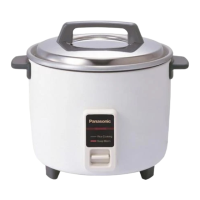
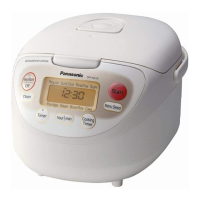

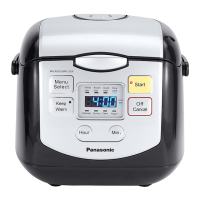


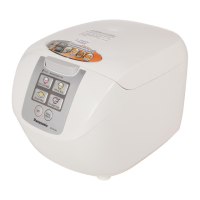

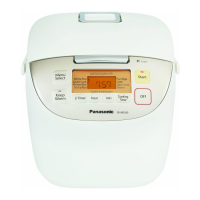

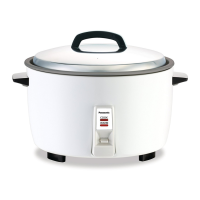
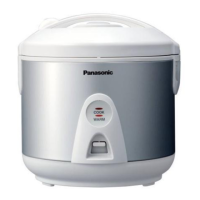
